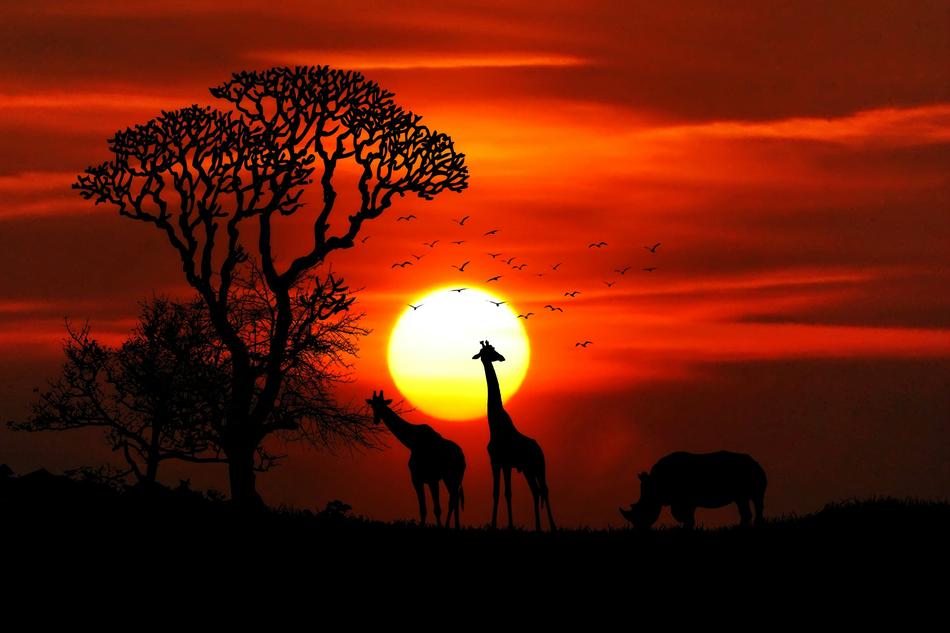To ensure global economic progress without compromising biodiversity we need to rebalance nature’s supply and demand.
In early February the comprehensive Dasgupta Review The Economics of Biodiversity was released by the United Kingdom’s government, exploring the significant impact of biodiversity and natural capital.
The review proposes methodologies for including the intrinsic value of nature as an asset, such as the inclusion of the contributions of nature in sustainable GDP growth estimates by incorporating parameters such as resources extracted, degree of sea and landscapes exploited, ecosystem services, climate change, habitat degradation and pollution.
Given the historical depreciation of these assets in many habitats we cannot use the current status of exhausted nature as a valid baseline. To ensure global economic progress without compromising biodiversity we first need to rebalance nature’s supply and demand. We must factor in these non-fungible assets and acknowledge that we all lose when we push habitats beyond what is ecologically and environmentally safe.
This devastating trend is well documented by the ~40 decline in natural capital value per person between 1992 and 2014, and the IPBES global assessment report for biodiversity and ecosystem services from 2019 projecting a loss of one million species over the next decades.
Living on the edge or beyond this tipping point is no longer an option with only one earth available and not the estimated 1.6 earths required to maintain our current standards of living, according to the review.
Understanding that the dichotomous nature of protecting biodiversity is inextricably linked to ensuring economic prosperity is as important as identifying what true healthy, sustainable development entails. We should never underestimate the resilience and value of a healthy ecosystem also for human subsistence and a “Gross Natural Impact” factor should be part of a true GDP estimate.
This daunting task requires continuous input and insightful advice not only from scholars across academic disciplines but also from expert indigenous people and local communities worldwide. Being open to the inspirational Dasgupta review while taking the subsequent criticism into consideration is a promising way for our societies to develop, learn and continue to take responsible actions for the overall benefit of future generations.
It is interesting to link the The Economics of Biodiversity with the Doughnut Economy Model, proposed in a 2012 Oxfam paper by the British economist Kate Raworth. This model conceptualizes how the 20th century economic system is inadequate when it comes to our current climate and biodiversity crisis, and stresses that GDP is not an acceptable measure of success.
Raworth describes the doughnut as a sweet spot between two concentric circles wherein lies the good life: the inner circle consists of 11 welfare dimensions based on UN’s world goals while the outer circle is based on nine key ecological and climate dimensions. Citizens in poorer countries often fall below the social foundation and citizens in wealthier countries tend to max out the environmental ceiling.
To simultaneously lift up the most disadvantaged and vulnerable while reeling in the ceiling busters several cities across the world have implemented doughnut economics. The theory forms the basis of the C40 network’s efforts to reduce greenhouse gas emissions and climate change and has now been adopted more widely as part of the strategy pledged by mayors of the C40 Cities to “No return to business as usual” post pandemic.
By actively and consistently valuing sustainable development, biodiversity and ecosystem services that continuously supports both our lives and livelihoods there is also an economic incentive to live within the planetary boundary.
Determining the value of well-functioning biodiverse habitats is complex and includes a myriad of defined ecosystem services. Together with natural capital resources all of these factors are incorporated in the UN Biodiversity Convention and the EU Biodiversity Strategy. Is it even possible to calculate the significance of ecosystem services like pollination providing value by fertilizing fruits, berries, nuts and nightshade crops?
If pollinators vanish, would it be the price of mechanical or manual pollination we have to account for and is it per crop or should economists tally in that pollination is required for ~35% of our plant-based crops? It is these types of immensely complicated questions that the 600-page Dasgupta review seeks to answer in addition to pointing out the importance of continuous environmental education in conjunction with increased and improved management of protected areas.
One of many concerns highlighted in the review include nature being exploited and undermined to a degree that invokes instability and possibly also provokes new infectious diseases including Covid-19. Another point is the complete disconnect from nature that many people experience due to increased urbanization across the world. As a result of the pandemic lockdowns, more people turn to exploring the outdoors to experience the therapeutic effect of nature if fortunate enough to have the means.
This newfound appreciation of nature increases our collective awareness regarding the state of many natural habitats: some remain intact while too many have been disturbed. It provides an opportune incentive for all of us to rethink old habits and “needs”, transform existing norms and minimize consumerism for the benefit of our planet. This is en par with the reduce-reuse-recycle-rethink mindset of circular economy.
To implement these changes Dasgupta points out that “there is a strong rationale for quantity restrictions over pricing mechanisms”.
Dasgupta’s review has been very well received by leading economists and ecologists while critics have voiced additional or conflicting opinions. An example of valid criticism is that not everything can be (easily) capitalized, and especially not sustainable ecosystems or biodiversity. Not accounting for the immense value nature provides in the form of resources, services and natural goodwill seems unreasonable to preposterous given that economic growth is inextricably linked to natural assets while simultaneously causing loss of biodiversity.
The obvious question is what is the alternative solution given that the set standard of taking natural assets for granted is far from a feasible, and certainly not a sustainable, route. Time and again the cost of conservation has shown to be significantly lower compared to the cost of restoration akin to prevention being much less expensive compared to treatment when dealing with health.
Yet other critics argue that it is not the first report to identify these disparities given that the Biodiversity Convention, IPBES and similar major inter-governmental platforms are continuously exploring these topics. The criticism merely underlines the complexity of the matter, augments our collective awareness and hopefully pushes our policymakers to implement improved sustainable measures to benefit global society.
Ensuring that government subsidies are restructured to protect and benefit nature instead of causing harm is one of many areas that demands attention.
The Dasgupta review was commissioned before the pandemic, and Covid-19 has demonstrated innumerous times how fast we in fact can implement absolutely necessary changes when required. It will be exciting to follow how our policymakers and politicians incorporate the sustainable ideas of the biodiversity economy with the environmental parameters already implemented in C40 cities and elsewhere.
Orchestrated correctly the combined Dasgupta and Raworth recommendations can transform our existences and economies already ripe for setting new sustainable goals without compromising biodiversity and the environment. Overall these efforts can minimize unjust disparities and human environmental impact, and positively transform our planet, to a planet in equilibrium.
This story first appeared on Sustainability Times
South Africa Today
© 2021 Sustainability Times.
This article is licensed under a Creative Commons Attribution-ShareAlike 4.0 SA International License.












